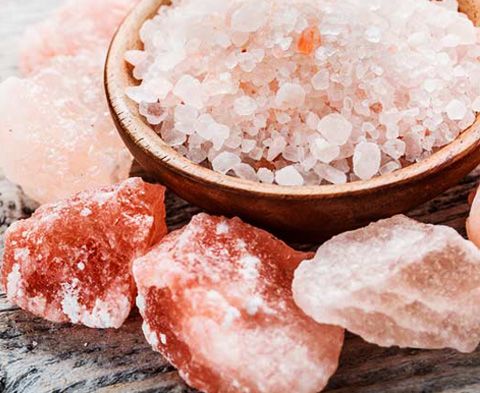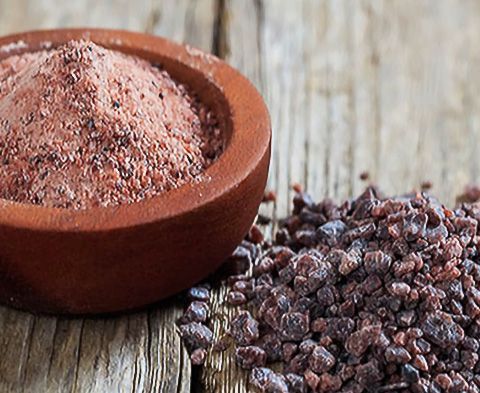Which Salt Substitutes are best for Hypertension?
Salt substitutes are reduced sodium and increased potassium salt alternatives to lower dietary sodium

Hypertension is the most important risk factor for heart attack, stroke, heart failure, atrial fibrillation, chronic kidney disease cognitive decline, and premature deaths.
According to the Cardiological Society of India, one in five young adults in India has high blood pressure.3 Approximately, 33% of urban and 25% of rural Indians are Hypertensive.2
Regardless of these figures, Hypertension is poorly controlled due to low awareness, lack of appropriate guidance, and poor follow-up.
Salt, one of the main seasoning ingredients used in kitchens worldwide contains high Sodium percentage which is a critical factor in increasing Hypertension and Obesity.4
Salt intake levels in India have been reported to be around 11 g per day, which is higher than the World Health Organization’s (WHO) daily recommendation of 5 g per day.8
Reduction in dietary salt intake and consuming low sodium salt substitutes can maintain normal blood pressure in both hypertensive and normal individuals. 4 This article aims to help you make a better dietary salt choice to manage Hypertension.
Low Sodium Salt Substitutes
Salt substitutes are reduced sodium and increased potassium salt alternatives available on market to lower dietary sodium intake to control high blood pressure without compromising taste.
Potassium is the chief ingredient used in low sodium salts. It serves the same functional properties as sodium. Various brands in India have been promoting salt substitutes with the name ‘low sodium’ or ‘diet salts’. These salts claim to be effective for managing hypertension and heart dysfunction.
The meta-analysis also favors that salt substitutes (high potassium salts) are effective in managing Hypertension.9
However, most of us are not aware of the health implications of high potassium salts. In addition to managing hypertension, a higher intake of potassium causes low blood pressure in Hypertension patients.10
Besides, patients with kidney dysfunction should strictly prohibit the use of “low salt” substitutes due to the risk of the development of hyperkalemia, a life-threatening condition.
Several kidney dysfunctioning cases with Diabetes and heart problems were reported using low salts, unknowingly to cure Hypertension. These patients were timely cured of hyperkalemia after following the details of their dietary salt intake.11
It’s better to avoid salt substitutes if you are prescribed potassium restriction by your physician.
Consequently, both the sodium and potassium ratio in salt determines your blood pressure.
However, people with hyperactive metabolism, need not reduce their dietary sodium intake due to increased sweating. Interestingly, sodium also plays an important role in several biological functions, including fluid balance, nerve conduction, and muscle contraction. Besides, salt is recommended to balance minerals and avoid dehydration in the body.5
Therefore, choose your salt wisely for its sodium and potassium content according to your health condition.
Here is the list of some popular Indian salt brands with their sodium, and potassium content (per 100g) as per printed on the product that will help you choose the salt best for your health:
|
|
|
|
|
Brand |
Sodium |
Potassium |
|
Tata salt |
38.7
g |
NA |
|
Tata lite |
33.2 g |
7.8 g |
|
Tata
Superlite |
26.85
g |
15.75
g |
|
Tata Rock
Salt |
NA |
0.03 g |
|
Tata Black Salt |
NA |
0.02 g |
|
Annapurna |
38.8 g |
NA |
|
Catch Table
salt |
33.5
g |
0.0025
g |
|
Sri Sri tattva
rock salt |
37.16 g |
0.26 g |
|
Keya pink
salt |
34
g |
0.03
g |
|
Saffola Salt
Plus |
35.3 g |
4.6 g |
|
Aashirvaad Salt
Proactive |
33.4
g |
7.8
g |
According to the current analysis, the top 4 salt choices for balanced sodium and potassium levels should be catch table salt, keya pink salt, and Tata lite or Aashirvaad Salt Proactive.
Debunking myth about very popular ‘Himalayan pink salt’

Himalayan pink salt or ‘Sendha namak’ is often rumored for its extended health benefits in terms of low sodium salt. To your surprise, several reports in the literature claim no additional health benefits of Himalayan pink salt.7
Besides lower levels of sodium in Himalayan pink salt compared to the white table salt, there is no clinical benefit of Himalayan pink salt. It is nutritionally very similar to white table salt. It’s just an expensive salt, rumored for its benefits. 7
The recommended daily intake of one teaspoon i.e. 5 g of pink salt contains small quantities of calcium, iron, magnesium, and potassium that do not significantly contribute to its nutritional value.1
Rather, Himalayan black salt or ‘Kala namak’ is a better option.

Himalayan black salt is rich in Iron, Calcium, and Magnesium and has low levels of Sodium than table salt and Himalayan pink salt. Apart from it also possess antioxidant property. 6
In the light of the above facts, we can conclude that the substitution of white salt with the Himalayan black salt can be an alternative to reduce daily sodium intake in patients suffering from hypertension and in general to maintain good health.
